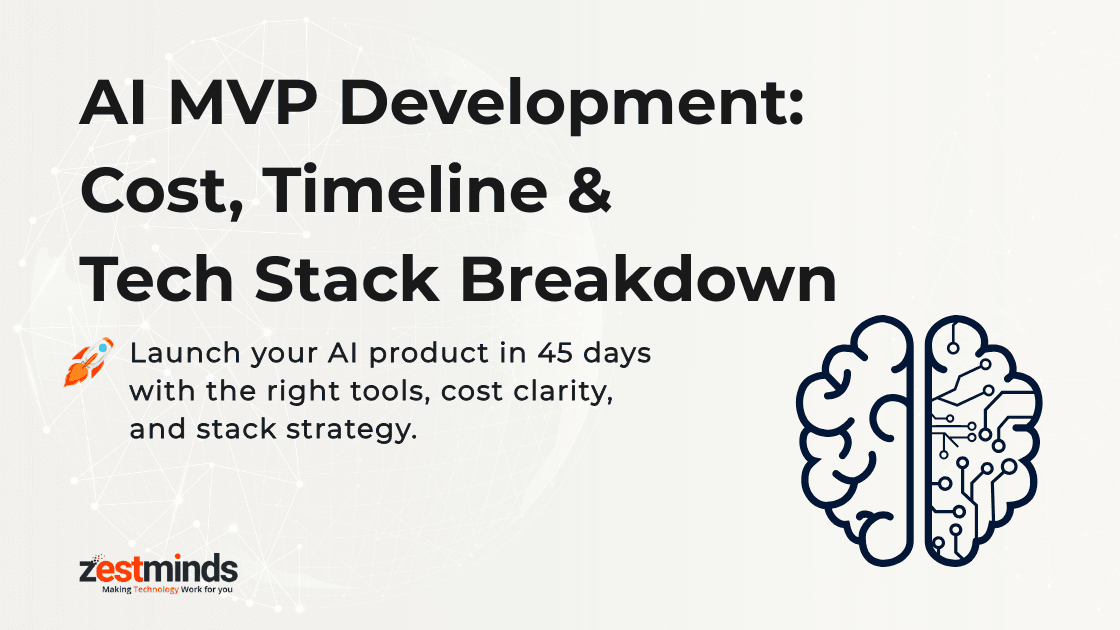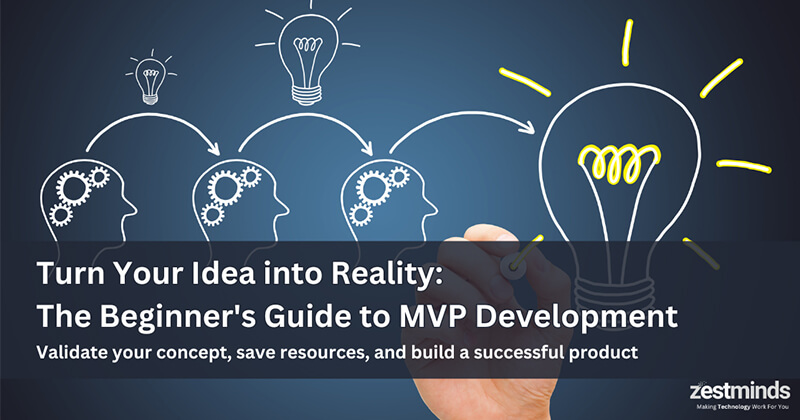MVP Development for Startups: From Idea to Launch Without Burning Cash
MVP development for startups doesn’t have to burn cash. Validate your idea fast, build only what matters, and launch with a lean roadmap. Inside: practical validation tactics, toolstack picks, and clear cost & timeline ranges, so you spend less and learn faster.
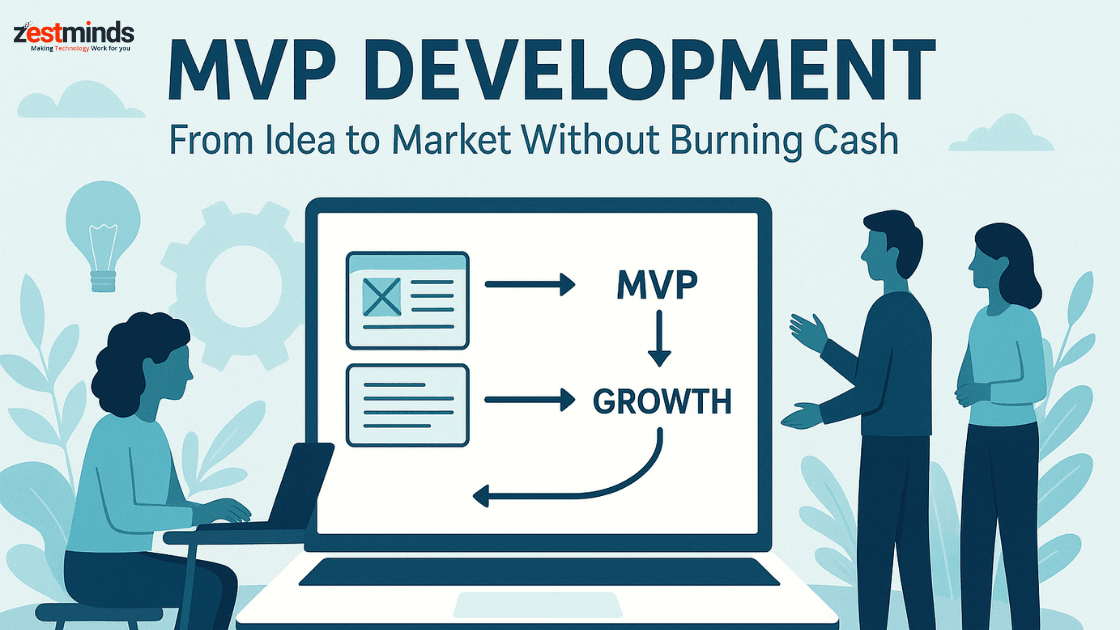
Quick Take
An MVP helps you launch faster, validate your idea with real users, and avoid waste. Build only what matters, learn from data, and scale with confidence. It's not about cutting quality; it's about cutting everything that doesn't move the needle.
Why MVPs Are the Smartest Move for Founders
Think of your product like a house: you lay a solid foundation before adding the rooftop pool. An MVP is that foundation, the simplest usable version that solves one core problem for a specific audience. You release it fast, collect feedback, and iterate instead of guessing.
Benefits: faster time-to-market, lower development cost, reduced risk, and investor-ready traction grounded in data.
Dropbox validated demand with a three-minute explainer video before heavy coding. Thousands signed up, proof that smart validation beats expensive builds.
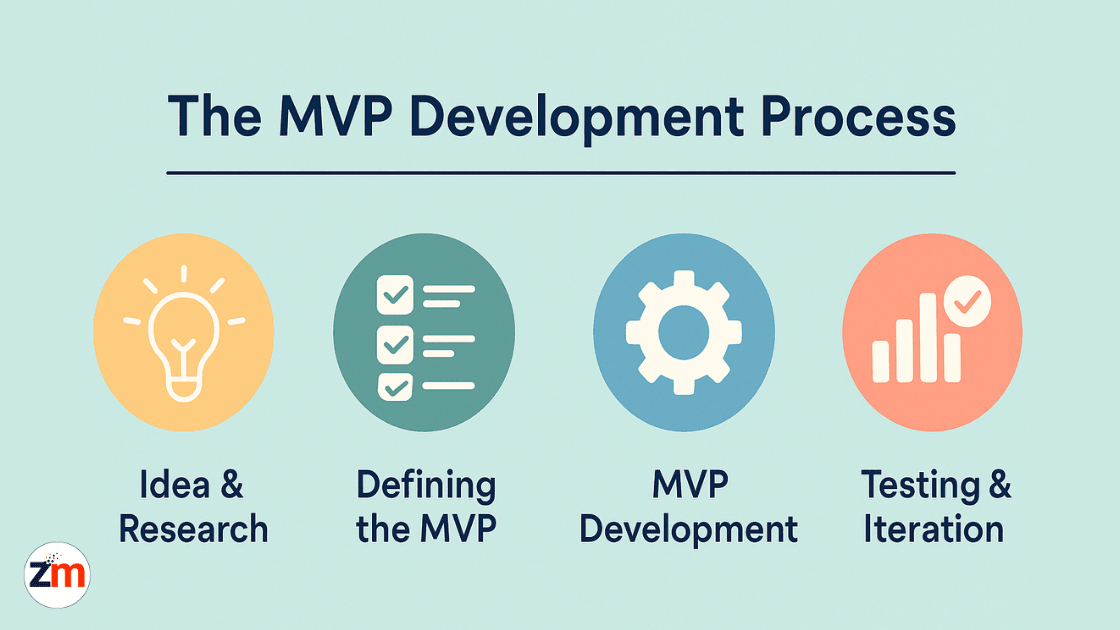
The Lean MVP Development Roadmap
Use this five-step blueprint to move from idea to market without burning cash. Each step builds evidence that your solution is wanted and worth scaling.
1. Get Crystal Clear on the Problem
If you can't explain the problem you solve in one sentence, you're not ready to build. Use this formula:
For [audience] who face [problem], [product] is a [solution] that delivers [key benefit].
Example: For small business owners overwhelmed by bookkeeping, FinTrack is a mobile app that automates expense tracking in minutes.
2. Validate Before You Build
Forty-two percent of startups fail because they build products nobody wants. Ground every decision in signal from the market.
- Landing page smoke tests: Build with Webflow or Carrd, run small ads, and measure sign-ups.
- Surveys and interviews: Capture problems in users' words and estimate willingness to pay.
- Pre-orders or waitlists: Real commitments beat polite interest every time.
Reference: CB Insights: Top Reasons Startups Fail
Further Reading
AI MVP Planning Checklist for Startup Founders: plan features, validation steps, and success metrics before you write code.
3. Pick Your Build Path
Choose the approach that matches budget, skills, and urgency. You can always migrate later once you prove demand.
- No-code: Bubble, Adalo, launch fast and cheap for concept testing.
- Low-code: Semi-custom builds to balance speed and flexibility. Explore Zestminds Low-Code Development.
- Custom development: Best for complex or high-scale products.
- Hybrid: Start no-code, then re-platform after validation.
| Approach | Best For | Pros | Cons |
|---|---|---|---|
| No‑Code (Bubble, Adalo) | Founders testing fast | Cheap, quick | Limited scalability |
| Low‑Code | Semi‑custom builds | Faster than full code | Some feature limits |
| Custom Build | Complex, unique ideas | Fully scalable | Higher cost/time |
| Hybrid | Long‑term scaling | Balance speed & growth | Needs planning |
4. Build Only What Matters
Ask this for every feature: If we remove it, does the MVP still solve the core problem? If yes, cut it. Airbnb began with photos and a booking request, no advanced filters, no automated payments.
5. Launch → Measure → Learn → Iterate
Your MVP is the start of a feedback loop, not a final product. Ship to a small audience, measure behavior, and iterate intentionally.
- Measure: activation, retention, engagement, and churn, not vanity metrics.
- Listen: talk to your first 50–100 users and prioritize patterns.
- Decide: pivot, persevere, or expand based on evidence.
Lean Founder's Toolstack
Mix and match these to keep costs low and learning high.
- Prototyping: Figma, InVision
- Landing Pages: Webflow, Carrd
- Backend: Firebase, Supabase
- No-Code Apps: Bubble, Adalo
- Analytics: Google Analytics, Hotjar
- Feedback: Typeform, Google Forms
Building an AI MVP? Add intelligence early without heavy infra via Zestminds AI Development.
Figma
Prototype UI in hours, not weeks.
Webflow
Launch high‑CTR pages with CMS speed.
Firebase
Auth + realtime DB in one setup.
Bubble
Build full apps—no code required.
Hotjar
See where users drop or hesitate.
Typeform
Collect crisp user feedback fast.
Positioning: Lean, Fast, and Capital-Efficient
An MVP is not a cheap knockoff; it's a disciplined way to de-risk. You prioritize learning over polish and speed over scope. That mindset keeps burn low and traction high.
Common MVP Mistakes (and How to Avoid Them)
- Overbuilding: more features rarely equals more value. Ship the smallest coherent solution.
- Skipping validation: your opinion is not market truth. Collect real signal.
- Ignoring monetization: even if you defer payments, understand your model.
- Not tracking behavior: without data, decisions become guesses.
From MVP to Scalable Product
When the MVP proves demand, scale intentionally instead of rebuilding from scratch.
- Elevate UX: remove friction surfaced in user feedback.
- Automate: replace manual ops with robust workflows.
- Harden: performance, security, reliability, and compliance.
- Expand features: only where usage data justifies it.
See how a lean MVP scaled globally in the Logoup Case Study.
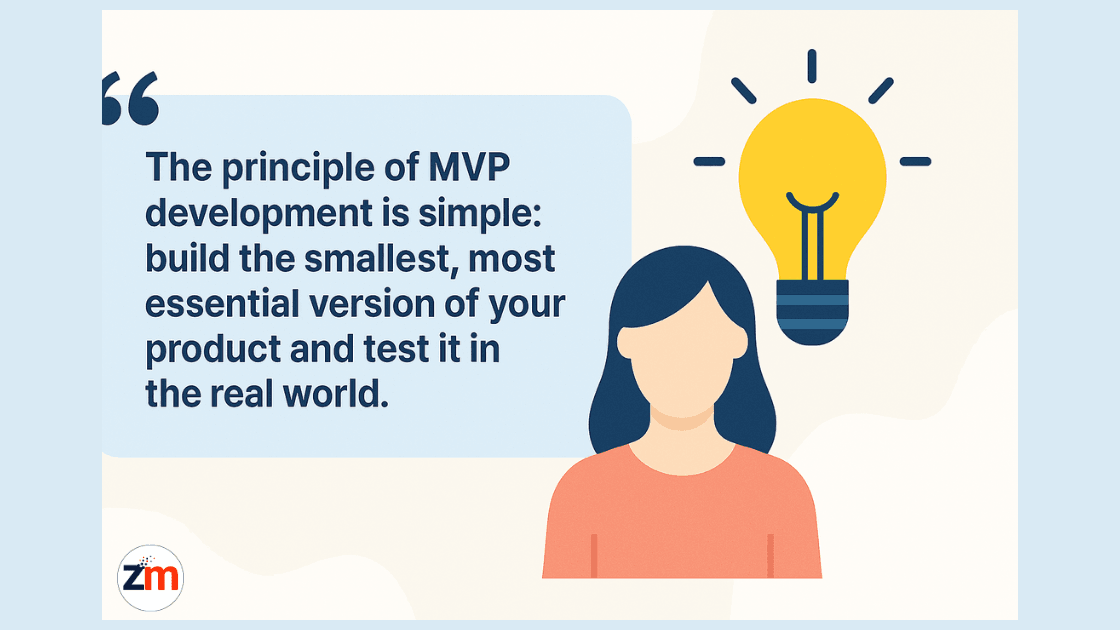
Real MVP Stories That Prove the Point
- Dropbox: validated with a video MVP before heavy coding.
- Zappos: founder photographed store inventory and fulfilled manually to test demand.
- Instagram: pivoted from a check-in app to photo sharing based on user behavior.
Case Study: MVP to Scale
See how a lean MVP evolved into a market‑ready platform in the Herdum Case Study. Learn how user feedback shaped the roadmap and architecture for sustainable growth.
Budget Planning: Build Smart, Spend Less
Costs vary by scope and stack. A pragmatic range helps you set expectations and control burn.
- No-code MVPs: thousands, not tens of thousands, for concept tests.
- Low-code/custom hybrids: moderate five figures for production-grade pilots.
- Full custom: higher budgets reserved for validated, unique workloads.
Want realistic estimates for your use case? Explore MVP Development Services for tailored timelines and budgets.
Recommended Guide
Curious about realistic costs, timelines, and tech choices for AI MVPs? Read the detailed breakdown in AI MVP Development Cost, Timeline, and Tech Stack for examples you can model.
Validation Tactics You Can Run This Week
- Landing page + waitlist: ship a crisp value proposition and capture intent.
- Prototype usability tests: five users reveal most issues.
- Pretotype offers: limited “concierge” service to learn workflows before coding.
- Price sensitivity tests: ask prospects to choose between tiers to gauge value.
For deeper strategy, see Lean Startup methodology and adapt to your market reality.
AI MVPs: Faster Validation With Generative Features
Generative AI can accelerate learning by delivering value early: smart assistants, content drafting, recommendations, and workflow automation. Start with hosted APIs, then specialize models as traction grows.
- Phase 1: integrate hosted AI features to test usefulness fast.
- Phase 2: capture feedback loops and refine prompts and guardrails.
- Phase 3: optimize costs and performance as usage scales.
See how we approach this on Zestminds AI Development.
Feature Prioritization: The 3-Box MVP
Sort features into three boxes and commit to them for the first release cycle.
- Must-haves: absolutely required to solve the core problem.
- Should-haves: improves experience but not essential for validation.
- Later: backlog for after traction or clear data support.
Analytics That Matter for MVPs
Track a few metrics deeply rather than many superficially.
- Activation: users complete the first key action that proves value.
- Retention: users come back and repeat the action.
- Engagement: time on task, depth of usage, and completion rates.
- Churn: reasons users drop off and where.
Founder Playbook: Your First 30–60–90 Days
Days 1–30: Validate the Problem
- Interview prospects and synthesize top pains and triggers.
- Ship a landing page and test headline and offer variations.
- Design a clickable prototype and run short usability tests.
Days 31–60: Build the Smallest Coherent MVP
- Choose no-code, low-code, custom, or hybrid based on scope.
- Implement must-have features only.
- Instrument analytics and feedback capture from day one.
Days 61–90: Launch, Learn, and Iterate
- Release to a waitlist or pilot cohort.
- Measure activation, retention, and drop-offs.
- Iterate weekly on the top friction points.
When to Pivot vs. Persevere
Pivots are not failure; they are adjustments based on learning.
- Pivot if: users like the idea but avoid core workflows, or retention is weak despite onboarding fixes.
- Persevere if: a narrow segment is highly engaged and shows willingness to pay.
Risk Management for First-Time Founders
- Scope risk: freeze MVP scope and guard it ruthlessly.
- Technical risk: start simple infrastructure; evolve with usage.
- Market risk: validate messaging and channels before big spends.
- Compliance risk: capture only necessary data at MVP stage.
How Zestminds Builds MVPs That Actually Convert
We combine lean validation, engineering excellence, and practical UX to deliver MVPs that sell the core value early. From no-code pilots to AI-first builds, the focus is always the same: ship, learn, and scale what works.
CTA: Get the Free MVP Launch Playbook
Ready to validate faster? Download the step-by-step framework we use with founders to go from idea to traction without overspending. Includes templates, tool lists, and a prioritization worksheet.
Download the MVP Launch Playbook
Helpful Resources
- CB Insights: Why Startups Fail
- Lean Startup Methodology
- Webflow for quick landing pages and experiments
FAQs
How much does MVP development cost?
Expect a spectrum: from a few thousand with no-code tools to higher budgets for custom builds. The smartest path is starting lean, proving demand, then investing where data justifies it.
How long does it take to build an MVP?
Most MVPs launch within four to sixteen weeks depending on scope, team, and approach. Time-to-learning is the real KPI, the sooner you ship, the sooner you improve.
Can I build an MVP without coding?
Yes. Tools like Bubble and Adalo let you ship quickly and learn cheaply. As traction grows, you can move parts of the product to custom stacks.

Shivam Sharma
About the Author
With over 13 years of experience in software development, I am the Founder, Director, and CTO of Zestminds, an IT agency specializing in custom software solutions, AI innovation, and digital transformation. I lead a team of skilled engineers, helping businesses streamline processes, optimize performance, and achieve growth through scalable web and mobile applications, AI integration, and automation.
Stay Ahead with Expert Insights & Trends
Explore industry trends, expert analysis, and actionable strategies to drive success in AI, software development, and digital transformation.
